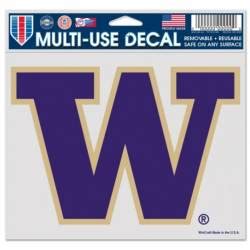Imageall
Author: d | 2025-04-24

Download ImageAll latest version for Windows free. ImageAll latest update: J Download ImageAll latest version for Windows free. ImageAll latest update: J

IMAGEALL Trademark of ImageAll, LLC - Registration Number
We all use them every time we point our telescopes skywards, but do you understand how telescope eyepieces work?In this article, we explain what we eyepieces do in a telescope, how they do it and everything else you need to understand to make the right eyepiece choice for your stargazing.What Does a Telescope Eyepiece Do?At its most basic, telescope eyepieces have two jobs to perform to improve our stargazing:Bring the light collected by your telescope’s lens or mirror to a sharp image at your eye, andMagnify that image to reveal detail contained within itUnderpinning that simplicity is a whole world of technical details, which we’ll simplify.Creating a Sharp ImageAll eyepieces (and there are loads of different types – just click here for a sense of the selection on offer) operate using the same physics. At their most basic there are two lenses: the field lens which points into the telescope, and, appropriately enough, an eye lens at the end you look through.The field lens takes the image from the objective lens of your telescope, focuses it to the eye lens, which then moves the beams of light to a focus point where your pupil will be so you can see a great image.There are a three challenges with this:Getting all the different coloured beams of light to the same pointHaving the right size exit pupilDecent levels of eye reliefChromatic Aberration (or, breaking the white light)Remember the story about how a prism splits white light into the colors of the rainbow?Well, stars that generally look white are actually comprised all those colors.Why is that of crucial importance for telescope eyepiece design?Because physics says that when that white light passes through the lenses of a telescope eyepiece, the blue light will bend at a different angle from the red, which means (without correction) they will end up at different places when they hit your eye.This phenomenon, where there is a blurring of the colors around stars when you look through your telescope, is called chromatic aberration.In the example on the right, you can clearly see where the colors of the rainbow have Deepfake-detection-challenge🐱👤 [Kaggle] Real/Fake image classificationDeepFake Detection (DFDC) SolutionChallenge details:Kaggle Challenge PageFake detection articlesThe Deepfake Detection Challenge (DFDC) Preview DatasetDeep Fake Image Detection Based on Pairwise LearningDeeperForensics-1.0: A Large-Scale Dataset for Real-World Face Forgery DetectionDeepFakes and Beyond: A Survey of Face Manipulation and Fake DetectionReal or Fake? Spoofing State-Of-The-Art Face Synthesis Detection SystemsCNN-generated images are surprisingly easy to spot... for nowFakeSpotter: A Simple yet Robust Baseline for Spotting AI-Synthesized Fake FacesFakeLocator: Robust Localization of GAN-Based Face Manipulations via Semantic Segmentation Networks with Bells and WhistlesMedia Forensics and DeepFakes: an overviewFace X-ray for More General Face Forgery DetectionSolution descriptionIn general solution is based on frame-by-frame classification approach. Other complex things did not work so well on public leaderboard.Face-DetectorMTCNN detector is chosen due to kernel time limits. It would be better to use S3FD detector as more precise and robust, but opensource Pytorch implementations don't have a license.Input size for face detector was calculated for each video depending on video resolution.2x scale for videos with less than 300 pixels wider sideno rescale for videos with wider side between 300 and 10000.5x scale for videos with wider side > 1000 pixels0.33x scale for videos with wider side > 1900 pixelsInput sizeAs soon as I discovered that EfficientNets significantly outperform other encoders I used only them in my solution.As I started with B4 I decided to use "native" size for that network (380x380).Due to memory costraints I did not increase input size even for B7 encoder.MarginWhen I generated crops for training I added 30% of face crop size from each side and used only this setting during the competition.See extract_crops.py for the detailsEncodersThe winning encoder is current state-of-the-art model (EfficientNet B7) pretrained with ImageNet and noisy student Self-training with Noisy Student improves ImageNet classificationAveraging predictionsI used 32 frames for each video.For each model output instead of simple averaging I used the following heuristic which worked quite well on public leaderbord (0.25 -> 0.22 solo B5). t) # 11 frames are detected as fakes with high probability if fakes > sz // 2.5 and fakes > 11: return np.mean(pred[pred > t]) elif np.count_nonzero(pred 0.9 * sz: return np.mean(pred[pred import numpy as npdef confident_strategy(pred, t=0.8): pred = np.array(pred) sz = len(pred) fakes = np.count_nonzero(pred > t) # 11 frames are detected as fakes with high probability if fakes > sz // 2.5 and fakes > 11: return np.mean(pred[pred > t]) elif np.count_nonzero(pred 0.2) > 0.9 * sz: return np.mean(pred[pred 0.2]) else: return np.mean(pred)AugmentationsI used heavy augmentations by default.Albumentations library supports most of the augmentations out of the box. Only needed to add IsotropicResize augmentation.def create_train_transforms(size=300): return Compose([ ImageCompression(quality_lower=60, quality_upper=100, p=0.5), GaussNoise(p=0.1), GaussianBlur(blur_limit=3, p=0.05), HorizontalFlip(), OneOf([ IsotropicResize(max_side=size, interpolation_down=cv2.INTER_AREA, interpolation_up=cv2.INTER_CUBIC), IsotropicResize(max_side=size, interpolation_down=cv2.INTER_AREA, interpolation_up=cv2.INTER_LINEAR), IsotropicResize(max_side=size, interpolation_down=cv2.INTER_LINEAR, interpolation_up=cv2.INTER_LINEAR), ], p=1), PadIfNeeded(min_height=size, min_width=size, border_mode=cv2.BORDER_CONSTANT), OneOf([RandomBrightnessContrast(), FancyPCA(), HueSaturationValue()], p=0.7), ToGray(p=0.2), ShiftScaleRotate(shift_limit=0.1, scale_limit=0.2, rotate_limit=10, border_mode=cv2.BORDER_CONSTANT, p=0.5), ] )In addition to these augmentations I wanted to achieve better generalization withCutout like augmentations (dropping artefacts and parts of face)Dropout part of the image, inspired by GridMask and Severstal Winning SolutionBuilding docker imageAll libraries and enviroment isCustom Embroidered Visors by ImageAll
. Download ImageAll latest version for Windows free. ImageAll latest update: J Download ImageAll latest version for Windows free. ImageAll latest update: JCustom Embroidered Fitted Caps by ImageAll
Custom Embroidered Infants Apparel by ImageAll
Custom Embroidered Youth Apparel by ImageAll
. Download ImageAll latest version for Windows free. ImageAll latest update: JCustom Embroidered Camouflage Caps by ImageAll
Comments
We all use them every time we point our telescopes skywards, but do you understand how telescope eyepieces work?In this article, we explain what we eyepieces do in a telescope, how they do it and everything else you need to understand to make the right eyepiece choice for your stargazing.What Does a Telescope Eyepiece Do?At its most basic, telescope eyepieces have two jobs to perform to improve our stargazing:Bring the light collected by your telescope’s lens or mirror to a sharp image at your eye, andMagnify that image to reveal detail contained within itUnderpinning that simplicity is a whole world of technical details, which we’ll simplify.Creating a Sharp ImageAll eyepieces (and there are loads of different types – just click here for a sense of the selection on offer) operate using the same physics. At their most basic there are two lenses: the field lens which points into the telescope, and, appropriately enough, an eye lens at the end you look through.The field lens takes the image from the objective lens of your telescope, focuses it to the eye lens, which then moves the beams of light to a focus point where your pupil will be so you can see a great image.There are a three challenges with this:Getting all the different coloured beams of light to the same pointHaving the right size exit pupilDecent levels of eye reliefChromatic Aberration (or, breaking the white light)Remember the story about how a prism splits white light into the colors of the rainbow?Well, stars that generally look white are actually comprised all those colors.Why is that of crucial importance for telescope eyepiece design?Because physics says that when that white light passes through the lenses of a telescope eyepiece, the blue light will bend at a different angle from the red, which means (without correction) they will end up at different places when they hit your eye.This phenomenon, where there is a blurring of the colors around stars when you look through your telescope, is called chromatic aberration.In the example on the right, you can clearly see where the colors of the rainbow have
2025-04-06Deepfake-detection-challenge🐱👤 [Kaggle] Real/Fake image classificationDeepFake Detection (DFDC) SolutionChallenge details:Kaggle Challenge PageFake detection articlesThe Deepfake Detection Challenge (DFDC) Preview DatasetDeep Fake Image Detection Based on Pairwise LearningDeeperForensics-1.0: A Large-Scale Dataset for Real-World Face Forgery DetectionDeepFakes and Beyond: A Survey of Face Manipulation and Fake DetectionReal or Fake? Spoofing State-Of-The-Art Face Synthesis Detection SystemsCNN-generated images are surprisingly easy to spot... for nowFakeSpotter: A Simple yet Robust Baseline for Spotting AI-Synthesized Fake FacesFakeLocator: Robust Localization of GAN-Based Face Manipulations via Semantic Segmentation Networks with Bells and WhistlesMedia Forensics and DeepFakes: an overviewFace X-ray for More General Face Forgery DetectionSolution descriptionIn general solution is based on frame-by-frame classification approach. Other complex things did not work so well on public leaderboard.Face-DetectorMTCNN detector is chosen due to kernel time limits. It would be better to use S3FD detector as more precise and robust, but opensource Pytorch implementations don't have a license.Input size for face detector was calculated for each video depending on video resolution.2x scale for videos with less than 300 pixels wider sideno rescale for videos with wider side between 300 and 10000.5x scale for videos with wider side > 1000 pixels0.33x scale for videos with wider side > 1900 pixelsInput sizeAs soon as I discovered that EfficientNets significantly outperform other encoders I used only them in my solution.As I started with B4 I decided to use "native" size for that network (380x380).Due to memory costraints I did not increase input size even for B7 encoder.MarginWhen I generated crops for training I added 30% of face crop size from each side and used only this setting during the competition.See extract_crops.py for the detailsEncodersThe winning encoder is current state-of-the-art model (EfficientNet B7) pretrained with ImageNet and noisy student Self-training with Noisy Student improves ImageNet classificationAveraging predictionsI used 32 frames for each video.For each model output instead of simple averaging I used the following heuristic which worked quite well on public leaderbord (0.25 -> 0.22 solo B5). t) # 11 frames are detected as fakes with high probability if fakes > sz // 2.5 and fakes > 11: return np.mean(pred[pred > t]) elif np.count_nonzero(pred 0.9 * sz: return np.mean(pred[pred import numpy as npdef confident_strategy(pred, t=0.8): pred = np.array(pred) sz = len(pred) fakes = np.count_nonzero(pred > t) # 11 frames are detected as fakes with high probability if fakes > sz // 2.5 and fakes > 11: return np.mean(pred[pred > t]) elif np.count_nonzero(pred 0.2) > 0.9 * sz: return np.mean(pred[pred 0.2]) else: return np.mean(pred)AugmentationsI used heavy augmentations by default.Albumentations library supports most of the augmentations out of the box. Only needed to add IsotropicResize augmentation.def create_train_transforms(size=300): return Compose([ ImageCompression(quality_lower=60, quality_upper=100, p=0.5), GaussNoise(p=0.1), GaussianBlur(blur_limit=3, p=0.05), HorizontalFlip(), OneOf([ IsotropicResize(max_side=size, interpolation_down=cv2.INTER_AREA, interpolation_up=cv2.INTER_CUBIC), IsotropicResize(max_side=size, interpolation_down=cv2.INTER_AREA, interpolation_up=cv2.INTER_LINEAR), IsotropicResize(max_side=size, interpolation_down=cv2.INTER_LINEAR, interpolation_up=cv2.INTER_LINEAR), ], p=1), PadIfNeeded(min_height=size, min_width=size, border_mode=cv2.BORDER_CONSTANT), OneOf([RandomBrightnessContrast(), FancyPCA(), HueSaturationValue()], p=0.7), ToGray(p=0.2), ShiftScaleRotate(shift_limit=0.1, scale_limit=0.2, rotate_limit=10, border_mode=cv2.BORDER_CONSTANT, p=0.5), ] )In addition to these augmentations I wanted to achieve better generalization withCutout like augmentations (dropping artefacts and parts of face)Dropout part of the image, inspired by GridMask and Severstal Winning SolutionBuilding docker imageAll libraries and enviroment is
2025-04-20